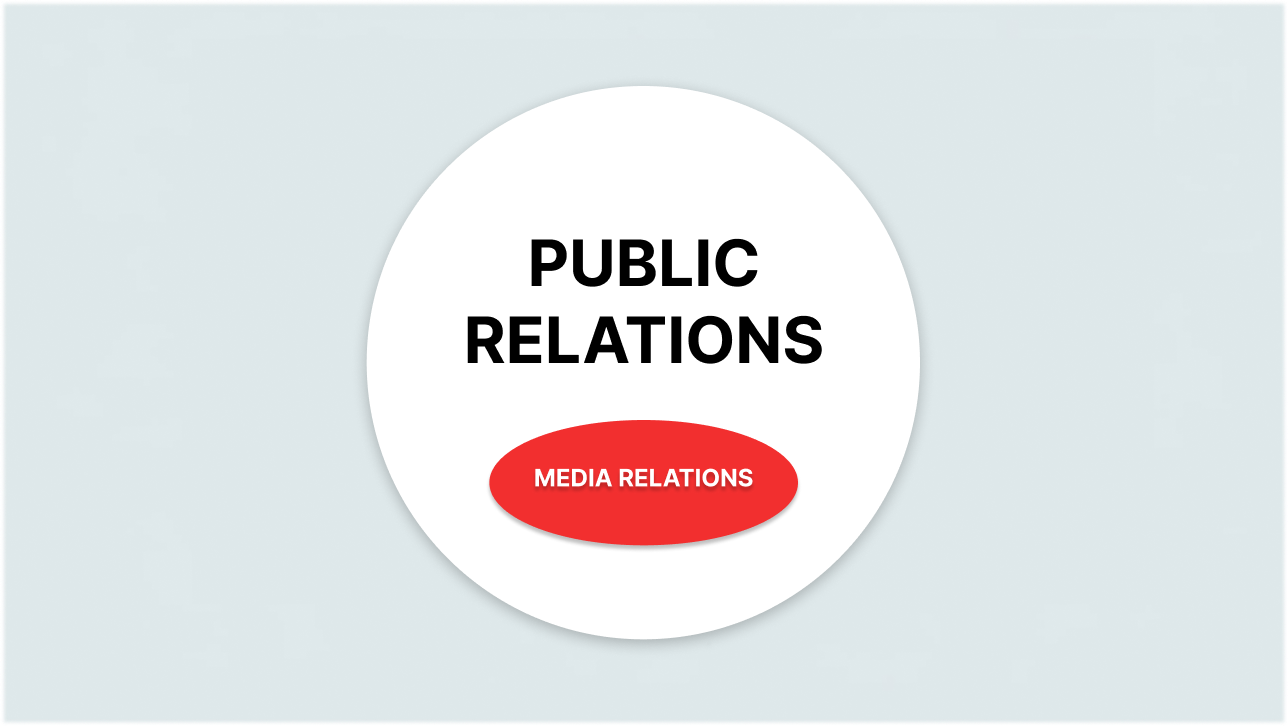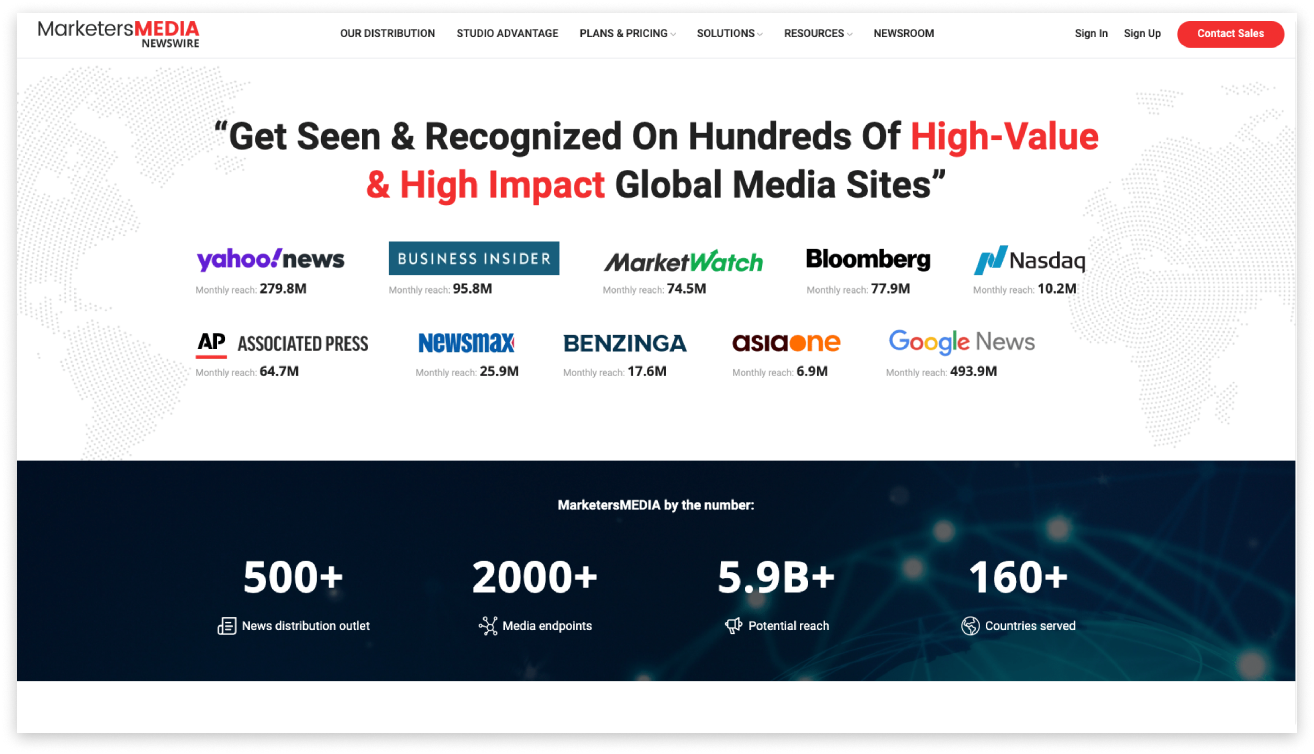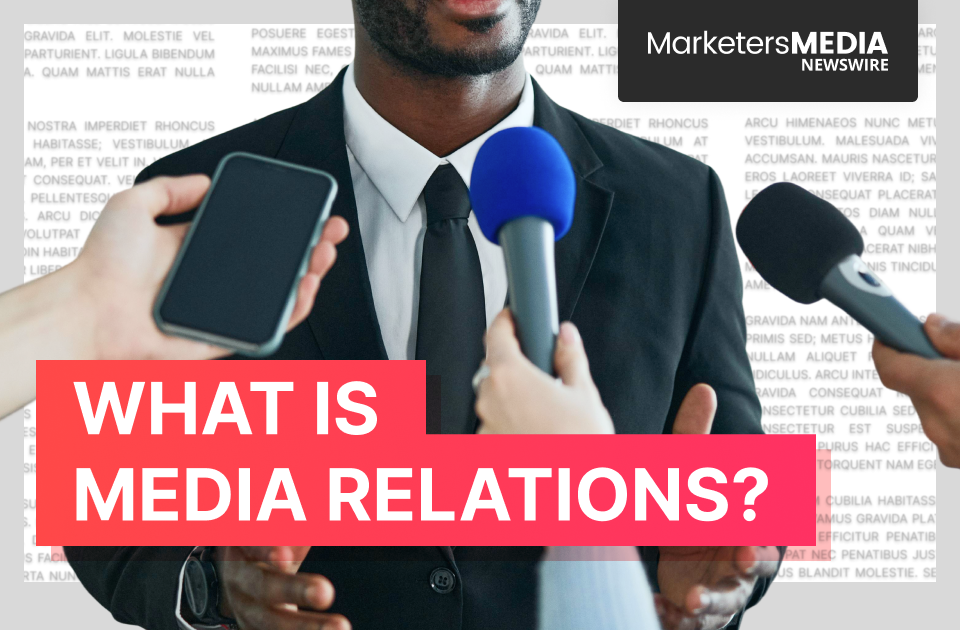Media relations is a critical part of any organization’s communication strategy. It’s how businesses, nonprofits, and even individuals connect with journalists and media outlets to share their stories.
Think of it like a bridge—your organization on one side and the public on the other, with the media helping get your message across. When done right, media relations help people see your organization in a positive light, establish trust, and boost credibility in ways that paid ads can’t.
So, what exactly does media relations involve, and why does it matter so much? Let’s break it down.
What Is Media Relations?
Media relations is the process of working with the media to share news and updates with the public. Instead of paying for ads, it focuses on getting journalists interested enough to write or talk about your story for free.
Here’s how it works. Say a company launches a new product or hits a big milestone. Media relations helps get that information to journalists who can share it with their readers or viewers. It’s a win-win—journalists get useful stories, and the company gets noticed.
While media relations is part of public relations (PR), it has a specific focus on working directly with the media. This includes sending press releases, coordinating interviews, and providing journalists with the information they need to create engaging stories. Over time, these efforts make it easier for the media to share your organization’s story in a positive and impactful way.
In short, media relations helps organizations get noticed, build trust, and connect with their audience through stories that feel real and credible.
Why Is Media Relations So Important?
Media relations carries significant value because it builds trust and reach audiences in ways that other strategies can’t. Let's look at what makes media relations valuable:
Builds Credibility
Getting mentioned in respected news outlets shows that professional journalists find your story worth telling. For example, if The Wall Street Journal covers your company's innovative approach to sustainability, readers see you as a legitimate authority on environmental initiatives.
Reaches Your Target Audience
Journalists already have established audiences. When your story is covered, it reaches people who are genuinely interested in the topic, whether it’s technology, sustainability, or community news.
Creates Long-Term Value
Media coverage doesn’t disappear. Articles, videos, or features remain accessible online, continuing to inform and influence people long after they’re published.
Saves Money
While good media relations takes time and effort, getting a journalist to cover your story costs far less than buying advertising space. A single positive news article can generate as much interest as multiple paid advertisements.
Handles Crisis Situations
Strong media relationships become particularly valuable during challenging times. Having established connections with journalists means they're more likely to hear your side of the story and report it fairly during difficult situations.
Boosts Employee and Stakeholder Morale
Positive media coverage doesn’t just help your public image—it also makes your employees and partners proud to be associated with you. Seeing your organization recognized in the media can strengthen loyalty and attract new talent.
What Do Media Relations Involve?
Media relations includes a variety of activities that help organizations share their stories and work effectively with journalists. It’s an ongoing process that combines strategy, communication, and relationship-building.
Building Media Contacts
A media list is a collection of journalists, bloggers, and editors who are relevant to your organization. Keeping this list updated and personalized means you know exactly who to contact when you have news to share, saving time and increasing your chances of success.
Developing a Media Strategy
Media relations works best when there’s a clear plan. This means defining your goals (like increasing brand visibility or managing perception) and deciding the best way to achieve them. A strategy helps keep efforts focused and effective, whether you’re launching a campaign or handling ongoing communications.
Training Spokespersons
The people representing your organization need to communicate effectively with the media. Media training helps prepare them for interviews, public appearances, and press conferences, ensuring they share the right message with confidence.
Crafting Media Materials
Journalists need information to write their stories. Media materials, like press releases, fact sheets, and media kits, make it easier for them to cover your news accurately and quickly.
Pitching Stories to the Media
Pitching is how you get journalists interested in covering your story. This involves crafting a clear, concise message and sending it to the right person.
It’s important to research each journalist’s beat (the topics they cover) to make your pitch relevant. Following up politely can also improve your chances of getting a response.
Coordinating Interviews and Events
Media relations also involves setting up opportunities for journalists to interact with your organization, like interviews, press conferences, or special events. These opportunities allow you to share your message firsthand and build stronger relationships with the media.
Tracking Media Coverage
Media relations involves keeping an eye on what’s being said about your organization across news articles, social media, and traditional media. It helps you understand how your message is being received, identify opportunities for more exposure, address negative stories, and measure the success of your outreach efforts.
Building Partnerships
Collaborating with media outlets or influencers is another way to gain exposure. This might involve arranging guest articles, interviews, or co-hosting events.
Strong partnerships with these groups can open doors to new audiences and ensure consistent coverage.
Understanding these core activities of media relations provides a foundation for success. However, it's important to note that while these activities are crucial, they represent just one aspect of a broader communication landscape. To better understand media relations' unique role, let's examine how it differs from the broader field of public relations.
How Is Media Relations Different From Public Relations?
While media relations and public relations often work together, they serve different purposes. Here's how they differ:

Purpose
Media relations is specifically about managing relationships with journalists and media outlets. Its goal is to secure earned media coverage, meaning your story gets featured in the news without paying for it.
Public relations, on the other hand, is broader. It includes managing all types of communication between an organization and its audiences—employees, customers, investors, and the public. PR often involves media relations but extends to areas like event planning, internal communications, and reputation management.
Audience
Media relations focuses on one primary audience: the media. It’s about working with journalists, reporters, editors, and bloggers to ensure they have the information they need to cover your story.
PR targets a wider audience, including customers, shareholders, employees, and the community. It ensures the organization’s message is clear and consistent across all communication channels.
Approach
Media relations involves activities like sending press releases, pitching stories, and organizing interviews or press conferences. It’s focused on making it easy for the media to cover your organization.
PR uses multiple strategies to communicate with different groups. This could include creating marketing campaigns, managing social media, writing newsletters and formal reports, and planning events to build the organization’s image and reputation.
Paid vs. Earned Media
Media relations relies on earned media—stories that journalists choose to publish because they find them newsworthy. This approach depends on building trust and providing value to the media.
PR can include both earned and paid efforts. While it often involves pitching stories, it can also include paid advertisements or sponsored content as part of a larger campaign.
Success Metrics
Media relations measures success through news coverage, article quality, and journalist relationships. PR looks at overall reputation, brand awareness, community engagement, and how different groups perceive the organization.
10 Steps to Build an Effective Media Relations Strategy
Creating a strong media relations strategy helps you connect with journalists consistently and effectively. Here's how to build one:
1. Define Your Audience
Success in media relations starts with understanding who you want to reach. Identify your target audience's demographics, interests, and media consumption habits. This knowledge helps you focus on outlets that align with your audience's preferences.
For example, if your news aims at business professionals, publications like Bloomberg or industry trade journals make more sense than lifestyle magazines.

2. Set Clear Goals
Defining communication objectives provides a solid starting point for impactful media relations. Start by identifying clear, measurable goals for your outreach. For example, you might aim to get featured in three key industry publications over the next quarter. Or maybe you just want to increase your media coverage by 25% in the next three months.
Ensure your objectives directly support your institution’s overall plans. Whether to build brand awareness or launch a new product line. Be sure to consistently track and update these goals according to how well you’re performing in the media and based on feedback to keep yourself accountable.
Beyond that, it’s even more important to align on these goals with your team, and to communicate them effectively. When everyone knows what you’re trying to achieve and the outcomes you want, coordination is easier, and efforts are more targeted. If sustainability is your featured theme, ensure every piece of communication produced conveys that theme. Emphasize it in press releases, interviews, and on social media.
3. Research Media Landscape
Take time to map out the media ecosystem relevant to your industry. Study which journalists consistently cover your sector, their writing styles, and the types of stories they prefer.
Build and maintain a detailed database of media contacts, including their beats, recent articles, and preferred contact methods. This research pays off when you need to pitch stories or respond to media opportunities quickly.
4. Create Valuable Content
A compelling story might be everything that tips you over the edge to get the media’s attention. Create story arcs that focus on the human side of your organization, like the difference your product makes in customers’ lives. Look for angles based on existing trends to make your story timely and relevant. If sustainability is trending, focus on sustainable practices in your narratives.
Good visuals and interesting data will help you stand out, too. Adding an infographic, chart, or customer testimonial makes your story richer and more interesting. A truly compelling narrative weaves emotion and impact together with data and research. This practice is widely favored among reporters and reporters’ readers alike.
5. Build Media Relationships
Connect with journalists regularly, not just when you need coverage. Start by following journalists' work and engaging with their content meaningfully. Share their articles when relevant, offer expert commentary when asked, and always respond promptly to their inquiries.
Remember that relationship building takes time and consistency. Small, regular interactions often lead to stronger connections than single, large gestures.
6. Develop a Media Kit
Create a comprehensive media kit that makes journalists' jobs easier. Include press releases, leadership profiles, fact sheets, high-resolution images, and videos. Update this kit regularly with fresh statistics, new achievements, and current contact information.
Store these materials where journalists can access them easily, and consider both digital and physical formats depending on your media contacts' preferences.
7. Time Your Outreach
Plan your announcements around industry events, relevant news cycles, and seasonal trends. Timing matters, and knowing the best time to send a press release can significantly impact its success. Take into account each media outlet’s lead time and their preferred windows for receiving pitches.
It’s also important to avoid competing with major news events or industry announcements that could overshadow your story. Use a calendar to track key dates and deadlines, ensuring your outreach is well-coordinated and strategic.
8. Maintain Message Consistency
Craft clear, consistent key messages that align with your organization's values and goals. Train your spokespersons to communicate these messages effectively across different formats - from quick sound bites to in-depth interviews. Develop specific talking points for various scenarios and keep them updated as your organization evolves.
9. Crisis Preparation
A thoughtful and thorough crisis communication plan is essential. This plan should outline pre-approved key messages, media spokespersons, and protocols for response to media inquiries. Developing protocols and training all team members helps to ensure a unified message is delivered even under pressure.
It’s even more important to closely monitor media coverage in real time when a crisis is striking. Using tools such as Google Alerts or Mention will be key to nipping misinformation in the bud before it spreads. Transparent communication builds trust. Acknowledging mistakes and clearly indicating your plan to fix them can go a long way to keeping the public’s trust.
10. Monitor and Measure Results
Measuring KPIs such as media impressions, sentiment analysis, and audience engagement provides a wealth of information about how well you are doing with your media relations efforts. Analytics tools can give you in-depth reports on these metrics, allowing you to see what content is performing and what isn’t.
Perhaps the most underutilized yet helpful resource is feedback from journalists. Requesting their feedback post-campaign is a good way to identify where we could have done better. By fine-tuning your approaches with this insight, you can make sure your campaigns are always improving and keeping pace with the rapidly evolving media landscape.
Wrapping It Up
By now, you’ve gained a clearer understanding of what media relations is, how it differs from public relations, and the ways they complement each other. Media relations is just one aspect of public relations, but it’s an incredibly important one that can shape how your organization is perceived.
With a thoughtful strategy and consistent efforts, you can build long-lasting relationships with journalists and media outlets. These partnerships benefit everyone involved by delivering meaningful content, establishing credibility, and keeping your organization ahead of the competition.
As the media landscape evolves, media relations will remain a vital of effective brand storytelling. While tools and channels may change, the core principles—authenticity, accountability, and providing value—will always be at the heart of successful media relations.
Looking to share your news and amplify your story? Our newswire services are here to help you distribute your press releases to the right audiences, ensuring your message reaches the right people at the right time.
Contact us today to learn more about how we can support your communication goals.
Free Press Release Template
Tell us where to send your PDF:






